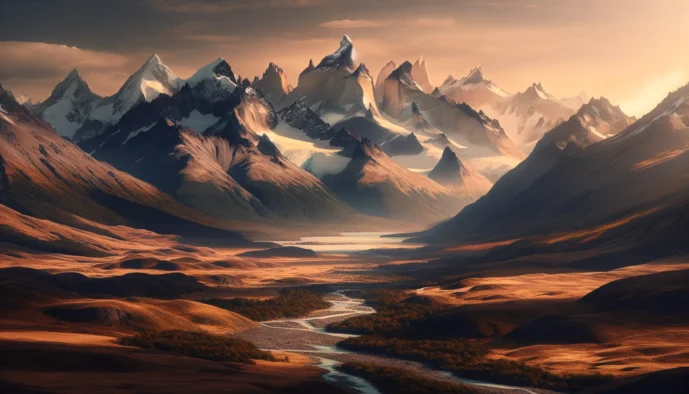Do’s and Don’t in Patagonia

Patagonia, spanning southern Argentina and Chile, is a dream destination for adventurers and nature lovers. From the glaciers of El Calafate to the peaks of Torres del Paine, this region offers unparalleled beauty. However, its remote and fragile environment requires mindful travel habits. Here are 10 do’s and 10 don’ts to ensure a smooth and respectful journey through Calafate, El Chaltén, Ushuaia, Puerto Natales, Torres del Paine, and Santiago de Chile.
Patagonia is a land of breathtaking landscapes, rugged wilderness, and extreme weather conditions. Whether you are hiking through Torres del Paine, exploring the Perito Moreno Glacier, or venturing into Tierra del Fuego, it’s crucial to be well-prepared. To make your trip smooth, enjoyable, and safe, follow these essential do’s and don’ts in Patagonia.
Do’s
Pack Light
When exploring Patagonia, packing light is key. Carrying unnecessary weight will slow you down, especially on long hikes. Stick to essential items and opt for multipurpose gear to minimize your load.
Use Multilayer Items
Patagonia’s weather is unpredictable, so dressing in layers is the best approach. Choose clothing that serves multiple purposes, such as a lightweight down jacket that also functions as an insulating layer or a windproof shell that doubles as a raincoat.
Pack for All Weather
Sun, rain, wind, and even snow can occur on the same day. Bring a waterproof jacket, thermal layers, and sun protection to be ready for any condition.
Withdraw Money Before Leaving for Remote Areas
ATMs are scarce in Patagonia’s rural areas, and many small towns and national parks operate on cash transactions. Withdraw enough money before heading into remote regions.
Check Weather Forecast Before Hiking
Weather can change rapidly, making certain trails unsafe. Always check the forecast before heading out to avoid getting caught in dangerous conditions like high winds or sudden snowstorms.
Keep Your Memory Cards in a Safe Place
The rugged landscapes and strong winds in Patagonia can put your camera gear at risk. Store memory cards in a waterproof case and keep them secure in your backpack.
Carry a Pack of Kleenex Wherever You Go
Public restrooms can be scarce or lack toilet paper, especially in remote areas. Always carry tissues and a ziploc for convenience.
Stay Hydrated and Energized
Long treks demand energy and hydration. Carry a refillable water bottle, use a water filter if necessary, and pack energy-boosting snacks like nuts, dried fruits, and protein bars.
Charge Your Electronics at Night
Opportunities to charge your devices can be limited, especially in remote lodges or campsites. Make sure to charge all electronics at night when you have access to power.
Manage Your Batteries
To extend battery life, enable screen savers, reduce screen brightness, and set devices to power off automatically after one minute of inactivity. Cold temperatures can drain batteries quickly, so keep them insulated.
Study the Hikes in Advance
Some trails in Patagonia are long, technical, or exposed to extreme weather. Research the difficulty level, estimated duration, and elevation gain before setting out.
Sleep with Your Electronics Close to Your Body
Cold temperatures can drain batteries overnight. Keep your phone, camera batteries, and power banks inside your sleeping bag to retain warmth and preserve battery life.
Get Offline Maps for Easier Navigation
Cell reception is often unreliable in remote areas. Download offline maps from apps like Maps.me or Gaia GPS to navigate without needing an internet connection.
Don’ts
Don’t Contaminate Nature
Patagonia’s landscapes are fragile. Always follow Leave No Trace principles—pack out all waste, avoid stepping on vegetation, and respect wildlife.
Don’t Leave Your Devices On All Day
Leaving devices on unnecessarily drains battery life. Turn off electronics when not in use or switch to airplane mode to conserve power.
Don’t Make Fires at Campsites
Fires are strictly prohibited in most national parks due to wildfire risks. Use a camping stove for cooking instead.
Don’t Underestimate Distances
Trails in Patagonia can be much longer and more challenging than they appear on maps. Be realistic about your physical condition and allow enough time for hikes.
Don’t Rely Solely on Credit Cards & Don’t Enter Rural Areas Without Cash
Many places, especially in remote regions, do not accept credit cards. Always carry cash to cover meals, transportation, and park fees.
Don’t Drink Too Much Liquid Before Night
Cold nights can make midnight bathroom trips uncomfortable, especially if you are camping. Avoid excessive drinking right before bed to prevent interruptions in your sleep.
Don’t Eat Too Much at Breakfast
While a good breakfast is important, overeating before a hike can cause discomfort. Stick to a balanced meal that provides energy without making you sluggish.
Don’t Hike Without Proper Preparation
Patagonia’s trails can be dangerous for those who are unprepared. Wear sturdy hiking boots, bring enough food and water, and carry emergency supplies like a first-aid kit and a whistle.
Don’t Rush Your Experience
Patagonia is not a place to check off a list—it’s a destination to immerse yourself in. Take time to appreciate the landscapes, engage with locals, and savor each moment of your journey.
By following these do’s and don’ts, you’ll be well-prepared to explore Patagonia while staying safe, respecting nature, and making the most of your adventure.